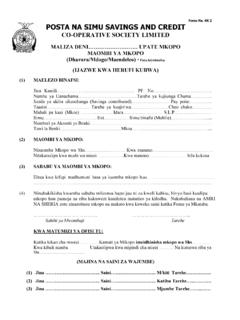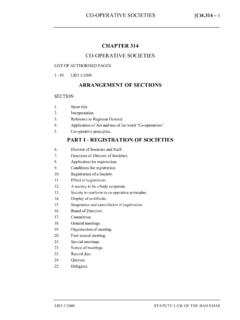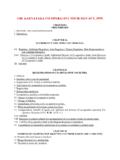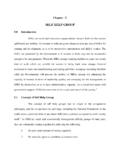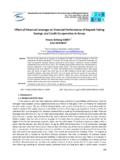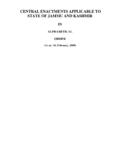Transcription of EU audit legislation - EY
1 Enter EU audit legislation FAQs 7 April 2015. 1 EU audit legislation FAQs 7 April 2015. 2 EU audit legislation FAQs 7 April 2015. European Union audit legislation Note These Frequently Asked Questions (FAQs). have been developed with and reflect a general consensus among the audit firms. The opinions expressed in these FAQs may also evolve as Member States begin to consider implementation of the legislation . This FAQ document has been prepared to assist in the interpretation of the EU audit legislation but it does not constitute legal advice. Where users are in doubt as to the interpretation of this EU audit legislation they are encouraged to seek individual legal advice. Abbreviations, definitions, and references: Directive Directive 2014/56/EU of the European Parliament and of the Council of 16 April 2014 amending Directive 2006/43/EC on statutory audits of annual accounts and consolidated accounts EC European Commission EC Q&A European Commission Frequently Asked Questions issued on 3 September 2014.
2 EU European Union IESBA The International Ethics Standards Board for Accountants legislation Both Directive 2014/56/EU and the Regulation (EU) No 537/2014. MFR Mandatory firm rotation NAS Non- audit services Regulation Regulation (EU) No 537/2014 of the European Parliament and of the Council of 16 April 2014 on specific requirements regarding statutory audit of public-interest entities 3 EU audit legislation FAQs 7 April 2015. Table of contents 01 General . Legislative Process 02 Public Interest Entities 03 Mandatory Firm Rotation 04 Transitional arrangements for MFR. (PIES) and (MFR). scope of the legislation 4 8 22 30. 05 Tendering 06 Joint audit 07 Non- audit Services (NAS) . 08 A cap on fees for permitted NAS. prohibited list of services 38 43 46 65.
3 09 audit Committees 10 Auditor reporting 11 Auditor Oversight/. audit 12 Impact outside of the EU. Regulators 71 75 81 85. 13 Member state options 89. 4 EU audit legislation FAQs 7 April 2015. 01 . General . Legislative Process Enter 5 EU audit legislation FAQs 7 April 2015. 01 General Legislative Process What is the form of the legislation ? 6. When will this new legislation come into effect? 6. Where will the new audit legislation apply? 6. Will there be any guidance issued to assist with interpretation? 7. 6 EU audit legislation FAQs 7 April 2015. What is the form of the legislation ? The legislation is in the form of a Directive and a Regulation. The Directive contains a series of requirements governing every statutory audit in the EU and amends the existing Statutory audit Directive of 2006.
4 The Regulation contains a series of additional requirements that relate only to the statutory audits of Public Interest Entities (PIE). The provisions on mandatory firm rotation (MFR), tendering, and the list of prohibited non- audit services (NAS) are contained in the Regulation and only apply to PIEs and their statutory auditors (and their networks as far as NAS are concerned). When will this new legislation come into effect? Regulation There is a two year delay in the application of most provisions from the date it entered into force (16 June 2014) which pushes the effective General Legislative Process date for practical purposes to the first financial year starting on or after 17 June 2016. Note There are separate transitional provisions for MFR.
5 (see Section 4). Note also that there are several Member State options which will only come into effect once/if a Member State decides to apply them. There is no deadline for this (see Section 13). Directive Unlike the Regulation, the Directive will need to be transposed by the respective Member States into their national laws in order to become effective law. Member States have a two year period in which to do so such that by 17 June 2016 Member States shall adopt and publish the measures necessary to comply with this Directive (see Question below). Where will the new audit legislation apply? This new legislation will apply in the 28 EU Member States and also in Iceland, Liechtenstein, and Norway as these countries are bound by this legislation as members of the European Economic Area.
6 See Section 12 for implications of the legislation outside the EU. 7 EU audit legislation FAQs 7 April 2015. Will there be any guidance issued to assist with interpretation? The interpretation of EU legislation is ultimately up to the European Court of Justice, and is meant to be based on an interpretative methodology that examines the plain language, overall scheme and purpose of the measure in question. The EC has issued some frequently asked questions1 to facilitate the General Legislative Process implementation of the new EU regulatory framework on statutory audit and contribute to a consistent application of the new framework across the Union. The EC Q&A is described as a 'work in progress' and may be updated. A new oversight body is to be established, a Committee of European audit Oversight Bodies (CEAOB) replacing the existing EGAOB see Section 11 for further details.
7 The CEAOB will comprise the national authorities responsible for auditor oversight and part of its remit, under Article , will be to: (a) f acilitate the exchange of information, expertise and best practices for the implementation of this Regulation and Directive 2006/43/EC. (b) provide expert advice to the Commission as well as to the Competent authorities, at their request, on issues related to the implementation of this Regulation and Directive 2006/43/EC. Article states For the purposes of carrying out its tasks, the CEAOB may adopt non-binding guidelines or opinions. The EC shall publish the guidelines and opinions adopted by the CEAOB. We anticipate that the responsible Regulator in each country will also issue guidance.
8 1. 8 EU audit legislation FAQs 7 April 2015. 02 . Public Interest Entities (PIES) and scope of the legislation Enter 9 EU audit legislation FAQs 7 April 2015. 02 Public Interest Entities (PIES) and scope of the legislation Overview 11. Is the PIE concept a new one? 11. What is the implication of being defined as a PIE? 11. What is the impact of having an EU PIE in a group? 11. Is there any exemption to the impact of being a PIE? 12. Does the exemption for cooperative and savings banks extend to their subsidiaries given that they might fall within the definition of a PIE in their local markets? Are these subsidiaries also subject to the exemption option given in Article 2 (3) of the Directive even if they are not cooperatives or savings banks in their own right?
9 12. PIE Definition 13. How is a PIE defined in the new legislation ? 13. Has the amended Directive changed the PIE definition from the old 8th Directive definition? 13. How does the Regulation affect multi-national corporations where the ultimate parent company is incorporated outside the EU? 14. What is meant by governed by the law of a Member State'? 14. Does the Regulation apply to branch offices? 14. Are funds captured by the PIE definition? 15. Are smaller/medium sized listed entities caught by the PIE. definition or is there a size criterion? 15. continue >. 10 EU audit legislation FAQs 7 April 2015. 02 Public Interest Entities (PIES) and scope of the legislation (continued). What are transferable securities? 16.
10 Does a company with listed debt fall within the PIE definition? 16. Is commercial paper considered to be listed debt under the definition of a PIE? 17. What are regulated markets? 17. What Member State law applies to an entity governed by the law of one Member State but with securities admitted to trading solely on an EU regulated market in another Member State? 18. What happens if an EU entity is listed on an EU regulated market but has no securities actually traded on that market? 18. Are there any exemptions to the credit institutions definition in Article (b) of the Directive? 19. In certain Member States there are regulated entities that are not banks ( , broker dealers or securities trading companies). Would broker dealers and other such non-bank regulated entities be PIEs per the EU definition?










